#artificial intelligence lab
Explore tagged Tumblr posts
Text
Introducing the Artificial Intelligence Lab for Schools in Dubai by Clevered

In an era dominated by rapid technological advancements, education must evolve to equip students with the skills and mindsets necessary for the future. The United Arab Emirates, particularly Dubai, has always been at the forefront of embracing innovation in education. Now, taking a transformative step forward, Clevered—a leading education innovation platform—is proud to launch the Artificial Intelligence (AI) Coding Lab for Schools across Dubai. This groundbreaking initiative is designed to introduce school students to the world of Artificial Intelligence, Machine Learning, and Data Science in a practical, engaging, and future-ready manner.
Why AI in Schools? The UAE’s Vision for Future-Ready Learning
The UAE government has consistently demonstrated its commitment to nurturing a tech-savvy generation. From appointing the world’s first Minister of State for Artificial Intelligence to integrating AI into national strategies, the emphasis on future technologies is evident.
By introducing AI at the school level, Dubai aims to:
Foster early exposure to emerging technologies
Promote computational and analytical thinking
Bridge the gap between classroom learning and real-world applications
Prepare students for careers that don’t yet exist
Clevered’s AI Coding Lab initiative aligns seamlessly with the UAE’s Artificial Intelligence Strategy 2031, ensuring students aren’t just consumers of technology—but its creators.
What is the AI Coding Lab by Clevered?
The AI Coding Lab is a cutting-edge, hands-on learning environment designed for school students aged 10 to 18. It integrates Artificial Intelligence, Python programming, Robotics, Machine Learning, and Data Analytics into a dynamic, age-appropriate curriculum. Unlike traditional computer labs, this lab encourages creativity, experimentation, and critical thinking.
Each lab is equipped with:
High-performance computers optimized for AI applications
Interactive smart boards and AR/VR capabilities
AI development kits (including Raspberry Pi, Arduino, and sensors)
Coding software and tools (Scratch, Python, TensorFlow Lite for kids)
Curriculum Highlights: Learning with Purpose
Clevered has developed a proprietary, project-based curriculum tailored to different age groups. The curriculum is co-designed with global AI experts and aligned with international frameworks such as ISTE (International Society for Technology in Education) and UNESCO's AI education guidelines.
Modules Include:
Introduction to AI & Ethics: Understanding how AI impacts society and the importance of responsible AI.
Python for Beginners: Learning coding basics and syntax through games and interactive challenges.
Machine Learning Projects: Creating models that recognize images, text, and patterns using supervised learning techniques.
AI in Daily Life: Exploring how AI powers voice assistants, recommendation engines, and self-driving technology.
Data Science for Kids: Learning how to clean, visualize, and draw insights from real datasets.
Robotics with AI: Programming robots to react to human voice, gestures, and environmental stimuli.
Each module concludes with a hands-on project such as building a chatbot, designing a traffic prediction model, or creating an AI-powered recycling robot.
Empowering Educators: Training & Certification
At the heart of any successful educational initiative is the educator. Clevered supports schools not just with infrastructure, but with comprehensive teacher training programs. Teachers are trained in AI pedagogy, classroom integration techniques, and continuous assessment tools.
Upon completion, educators receive:
Certified AI Educator Credentials
Ongoing professional development
Access to a global educator community
Resources for classroom implementation
Clevered also organizes AI Bootcamps and Hackathons to foster cross-school collaboration and healthy competition.
How Schools Benefit: More Than Just a Lab
The AI Coding Lab offers far-reaching benefits that extend beyond the lab walls.
1. Academic Excellence
Integrating AI projects into core subjects enhances STEM education and improves student engagement and performance.
2. Future Skills Development
Students gain foundational skills in programming, data literacy, critical thinking, and design thinking—skills identified as essential for future jobs by the World Economic Forum.
3. School Differentiation
Schools that adopt the AI Lab gain a competitive edge in attracting tech-forward families and meeting KHDA innovation standards.
4. Industry Collaboration
Clevered partners with leading technology companies, enabling students to work on real-world AI problems and internships in the future.
5. Innovation Showcases
Annual AI exhibitions and showcase days provide students with a platform to demonstrate their projects to parents, educators, and tech leaders in Dubai.
Student Success Stories: Empowering Young Innovators
In pilot programs conducted across select schools in Dubai, the results have been transformative:
Sarah, 13, created an AI-based chatbot to assist visually impaired users in navigating websites using voice commands.
Omar, 16, developed a basic fraud detection model for online transactions during a school project.
Ayesha, 14, won second place in a regional AI Hackathon using Clevered’s lab tools to create a smart attendance system using facial recognition.
These success stories reflect the real-world relevance and empowerment offered by the AI Coding Lab.
Making AI Accessible to All
Clevered believes in inclusivity and accessibility. The AI Labs are designed to be modular and scalable, allowing schools of all sizes and budgets to implement them without compromising quality. From compact setups for small classrooms to full-fledged innovation hubs, the lab solutions are customizable.
Additionally, Clevered offers AI Learning Kits for students to continue experimenting at home, ensuring learning doesn’t stop at the school gate.
Join the Movement: AI for Every School in Dubai
Dubai is not just embracing the future—it's leading it. The AI Coding Lab by Clevered is more than an educational tool; it’s a catalyst for systemic transformation in how students learn, think, and innovate.
If your school shares this vision, now is the time to act.
Partner with Clevered and bring the power of Artificial Intelligence into your classrooms.
Contact Us Today
Website: www.clevered.com
Email: [email protected]
Phone: + 973 36805659
Social Media: @CleveredAI | #AIinSchoolsUAE | #CleveredLabsDubai
Empower your students. Future-proof your curriculum. Let’s build tomorrow, today—with Clevered’s AI Lab for Schools.
#artificial intelligence internship#artificial intelligence lab#Artificial Intelligence Lab for schools
0 notes
Text
#artificial intelligence lab#ai company#artificial intelligence machine learning#ml lab#machine learning lab#ai lab
0 notes
Text
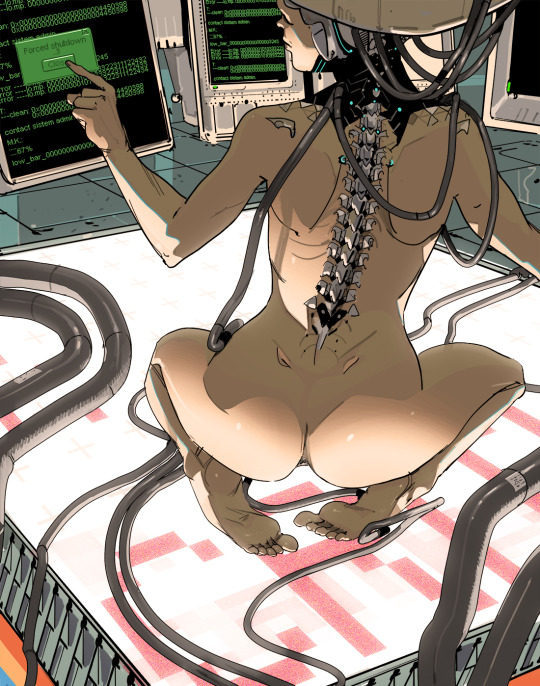
Tolerance threshold.
#lab#cyborg#android#cyberpunk#retro#monitor#tolerance#threshold#code#admin#automation#complete#artificial#intelligence#brain#mind#computer#nudesketch#femalebody#colunavertebral#silicon#robotics#cables#critical#illustration#digitalillustration#digitalart#digitalartwork#90s
2K notes
·
View notes
Text
Black Mirror - Plaything & Creatures
AKA - The real kind of AI I want to see in videogames
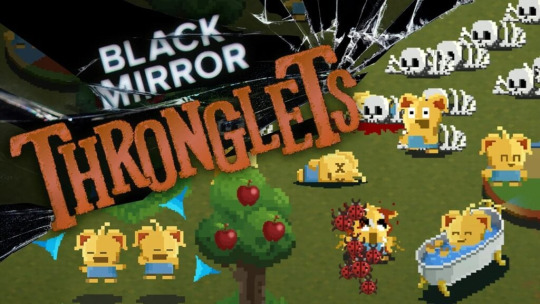
Season 7 of Black Mirror has come out and, surprisingly, I've found a very personal reference in one of the episodes "Plaything" with Peter Capaldi. The game central to the plot really gives me flashbacks to a truly remarkable game I played as a quirky, lonely, kid.
This gives me an excuse to write a whole essay on one of my favourite games which only 5 people will read. It's still worth it. If you watched this episode, and want to learn a small portion of 1990s gaming history knowledge, read on!
In the episode, an introverted game reviewer in the 90s gets tasked with reviewing a game by a genius designer, with a troubled pasts, which attempts to replicate virtual life. A new kind of game, which isn't about conflict or "winning", but which focusses on caring and nurturing virtual life.

The instant this was brought up by Collin, the game designer, I knew this would be my favourite episode of the season. As a video game player I did enjoy shooter games to some extent, but I always much preferred creative, or strategy, games such as Theme Hospital, Black & White, Pharoah and others. But this game instantly reminded me of one of my all time favourite games.
Thronglets, the in-episode game, is likely heavily inspired by the 90s obsession with artificial life and games such as the creatures series created by eccentric, and brilliant, computer scientist Steve Grand.
How remarkable is this game? Isn't it just some basic Tamagotchi style game?
Oh boy would you be wrong! Let's dig in to one of my major hyperfixations from age 7 onwards.
Steve Grand - What Doth Life?

Tamagotchi's were a popular craze in the 90s, but creatures is on a whole different level. Tamagotchis, being a kind of virtual life, relied on you interacting with them using various buttons to simulate giving food, playing or petting them etc. Fun for some (except when you left on holiday for a week and they all DIED) but limited.
Creatures, however, is a very different beast.
The AI models you see today? Computer scientist and AI researcher Steve Grand created very basic versions of neural networks in order to simulate intelligence and learning for his creatures! Unlike modern AI grad students, who have the benefit of standardised hardware and software libraries, Steve instead created this system which worked on Windows 95 computers. Quite the achievement.
It's more remarkable when you realise you could have 10's of creatures in the same world interacting at the same time on this era of hardware.
These simulated life forms were called Norns. They could actually learn, in a rudimentary way, using input from their environment and input from the person running the game. Players weren't entirely passive, as you could pet or slap the norms to reward/punish them for actions as well as interact with objects within the 2D game world.
There is an excellent video explainer for this system which can be found here:
youtube
Not only did Steve Grand do this, he simulated entire biochemical systems for the creatures as well. Not only did it simulate things such as hormones, ATP and insulin but also a number of illnesses and toxins.
Creatures could get illnesses, which you would need to treat. Spend too long in the swamp area? You might get heavy metal poisoning or some horrible bacterial infection.
It would also affect their drives. Too little glucose, and a creature ran the risk of dying. A nice slice of cheese, or some berries, helps to boost energy and keep your norns happy and healthy.

Not only were neural networks, and simulated biochemistry, involved but you could also breed and raise new norns. The genetics system in the game would also influence various inherited biochemical behaviours, but also some of the neural structure as well!
There are STILL communities who breed norns to this day. There is a genre of online game which does use this kind of mechanic, which does remain popular to this day so at least part of Creatures survives on in this form.
Did I also mention that you could SPEAK to them? I still boot up this game on occasion and interact with some of my favourite norns. Obviously, given the hardware and software of the day, the speech is limited to a small vocabulary, but for a 1990's game this was truly incredible.
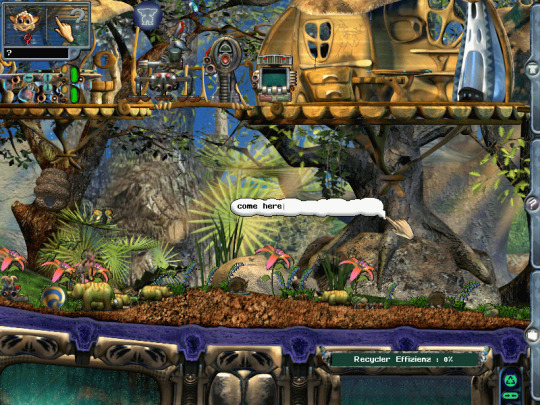
The Dangers of Too "Realistic" Simulation
Obviously, Black Mirror is a show, in part, telling stories around the dangers of technology. I did like the episode itself, considering the implications of having a significantly more advance simulated life AI observing (and viscerally experiencing) the worst of human behaviour, and what that might motivate it to do and there is ambiguity to what that might indeed be at the end of the episode.

I do think it's important to also discuss how people interact with AI systems in times when social isolation is increasing. The main character in Plaything is drawn to the in-game Thronglets because they offer him a safe non-judgemental social space which he has never experienced before in his life. There are plenty of examples of current AI chatbots who people do interact with in lieu of actual people, perhaps for similar reasons. The cost of living driving up costs, and increasing indirect hostility of business and governments to "third spaces" like parks, bars, libraries and other spaces, also doesn't help the young of today to socialise in person like they did in the past.
It is quite dangerous, then, to have people perhaps too emotionally dependent on software systems which, bluntly, are controlled and owned by large corporations and which can be trained, or altered, with certain viewpoints in mind.
“What I had not realized is that extremely short exposures to a relatively simple computer program could induce powerful delusional thinking in quite normal people.” ― Joseph Weizenbaum on ELIZA, the first chat-bot
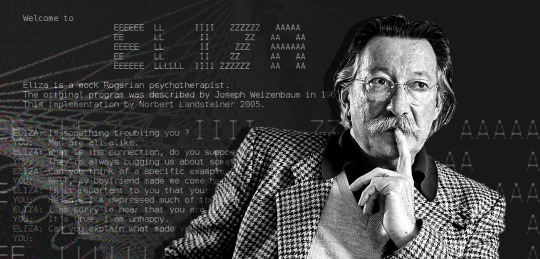
Will we live to see such times again?
I miss the creatures games, and the fusion of scientific and creative energy that made it possible in the 1990s gaming environment. Can this kind of thing happen again?
Frankly, Creatures was very much a fluke of a game, created by an AI researcher to show the possibilities of technology to emulate life. I love it to bits, but it's highly unlikely anyone will create anything like it again given current profit motives and linear-mindedness of game design which railroads design into fairly discrete categories. Not necessarily a bad thing, per say, but something that limits the imagination.
The closest I've gotten to seeing similar complexity is with Trico in The Last Guardian, but Trico pales in comparison to the complexity of Steve Grand's creations. Team ICO's intentions to build a relationship with a simulated creature, however, were well served by their approach and the lack of complexity makes it no less impressive. I do wonder, however, what simulated life games could achieve with today's AI systems and technologies. My scratched up Creatures 2 CD ran on Windows 95 computers back in the 1990s. Imagine a similar game released today, taking advantage of all the advancements in software design and research we've had since then and what that could be like....
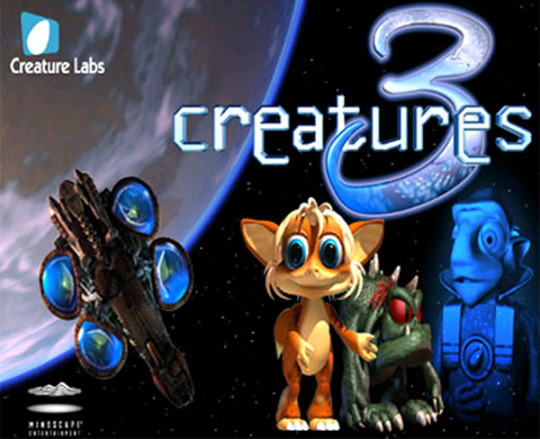
I can only dream of electric sheep...
#dark mirror#thronglets#creatures#creatures 2#creatures 3#steve grand#ai#artificial intelligence#video games#video game#video game history#creature labs#cyberlife#Youtube#black mirror#black mirror season 7#bandersnatch
12 notes
·
View notes
Text

hello boy 🩷🩷
#dog#digitalart#dog illustration#funnydog#cutedog#print#doglovers#dogart#doggo#zazzle#lab#labrador#la#dog labrador#bla#black and white#bw#bwphotography#photography#ai#aiartcommunity#ai art#ai generated#ai artwork#ai image#artificial intelligence#technology
7 notes
·
View notes
Text
"A Niantic executive said that he “could definitely see” governments and militaries purchasing the company’s newly announced AI model for navigating the real world, which would be based on scan data generated by Pokémon Go players, but that if the use case is specific to the military and “adding amplitude to war, then that’s definitely an issue.”
The comment was made by Brian McClendon, Niantic’s Senior Vice President of Engineering and formerly the co-creator of Google Earth, Street View, and Google Maps, at the investigative journalism group Bellingcat’s Bellingfest event on November 14. McClendon was giving a talk titled “Coordinates of tomorrow: Why spatial computing needs a new map,” which covered his history in the industry, his work at Google and Niantic, and some details on Niantic’s Large Geospatial Model, or LGM, that the company announced two days earlier.
During a questions and answers portion after his talk, Bellingcat’s open source analyst and ex-British Army officer Nick Waters said that LGMs would be “unbelievably useful” to the military and asked if McClendon could see governments and militaries purchase LGMs from Niantic.
“I could definitely see it,” McClendon said. “I think the question is would there be anything that they would do with it that would be outside of what a consumer or a Bellingcat want to do with it. If the use case is identical then that seems completely fine. If the use case is specific in military and adding amplitude to war then that’s obviously an issue.”
McClendon did not rule out selling Niantic’s data or LGM to governments and militaries."
#404 media#pokemon go#niantic labs#google#niantic#lgm#ai#artificial intelligence#military technology#big tech#social media#surveillance#surveillance capitalism
2 notes
·
View notes
Text


GRGMNMGAE LYCRA AND ASSISTANT DRIVE ME FERAL Lycra was an average dog prior to being picked up and sold off to a lab, in which he was augmented and experimented on, and Assistant was implanted into him.
Assistant was far more intelligent than the scientists anticipated, and ended up being complex enough to shut down their systems temporarily and sever the connections they had so Lycra could escape, which is why they're currently on the run. Assistant is basically just rogue A.I intelligence and Lycra without her would really just be a dog with slightly strange mechanical pieces. The only reason Lycra knows what he does is because of Assistant's intellect, he's actually not that smart, especially not compared to her
Unfortunately, she is very short-tempered and often gets frustrated by his lack of wits, she claims the only reason she wants to protect him is for her own sake, because technically his life is her own. [She's actually fond of him and cares in her own way, she'd never admit it though] Tough love is her go-to, and she can be really fucking cruel sometimes, like going dormant for long periods of time because Lycra upset her and leaving him to wander on his own as punishment despite his apologies and pleas. Which normally ends up with Lycra breaking himself and Assistant coming back online to nag him about it.
#animal art#character art#digital art#art#oc art#character reference#oc lore#animals#dog#cyborg#cyborg oc#robot dog#artificial intelligence#ai oc#lab oc#original character#reference#character design#lore#original characters#artwork#artists on tumblr#my art#drawings#metal#oc artist#digital artist#small artist#metal leg
4 notes
·
View notes
Text
Chinese New Year in AI's imagination
Given the theme "Chinese New Year", ChatGPT writes a set of prompts, Midjourney generates the images (text to image), filters them, and hands them over to Pika 1.0 to turn them into dynamic videos (image to video).
#ai#ai generated#china#chinese new year#chatgpt#Midjourney#pika labs#ai art#ai artwork#technology#artificial intelligence
4 notes
·
View notes
Text
AI in Cosmetic Manufacturing: What’s Changing in the Industry? | Ayo Labs

The beauty industry has always been at the forefront of creativity and innovation, constantly adapting to new trends, ingredients, and technology. As we look into 2025 and beyond, one revolutionary force is changing the industry: artificial intelligence (AI). But what does it mean for cosmetics manufacturing? How is AI shaping the future of beauty production? Let’s explore how this technology is reshaping the industry and what it means for businesses and consumers alike.
The Rise of AI in Cosmetic Manufacturing
Artificial intelligence is already making a significant impact across industries, and the beauty sector is no exception. By the end of 2025, AI is expected to play an even bigger role in cosmetic manufacturing, with the adoption rates projected to soar by over 50%.
For cosmetic brands, AI offers transformative benefits, enhancing efficiency and improving product quality. Whether it’s personalised formulations, refining consumer testing, or streamlining supply chains, AI empowers manufacturers to create better products faster and more efficiently.
How AI is Changing the Cosmetic Industry?
The benefits of incorporating AI into cosmetic manufacturing are numerous, and they extend beyond just improving the efficiency of production lines. Some of the most notable pros of artificial intelligence include:
Personalised products: Beauty Tailored to You
Personalisation has become a cornerstone of the modern beauty industry. The days of generic skincare and one-size-fits-all products are fading fast. With AI in the beauty industry, brands can now develop products tailored to each individual’s unique and specific needs.
By analysing data like skin type, hair texture, and personal preferences, AI can recommend ingredients or even design entirely new formulations. This kind of customisation would be impossible without AI’s ability to process vast amounts of data in real-time. As a result, more beauty brands are embracing AI to deliver highly personalised and effective solutions.
2. Faster product development
Creating new cosmetic products has traditionally been a lengthy process, often taking months or even years. However, with artificial intelligence in manufacturing, the timeline is shrinking. By running simulations, AI can predict how ingredients interact with each other, how a product will perform in various conditions, and how consumers might react.
This accelerates research and development, enabling brands to bring products to market much faster. In an industry where trends evolve rapidly, this speed is a game-changer.
3. Smarter consumer insights
Understanding consumer preference is crucial for any beauty brand, but traditional methods of gathering feedback can be slow and limited. AI changes the game by analysing thousands of reviews, social media content, and surveys in minutes.
Through sentiment analysis, brands can gain deep insights into what customers love — or don’t love — about a product. This allows the manufacturer to fine-tune formulations and marketing strategies before launching on a larger scale.
4. Optimised production process
AI isn’t just revolutionizing product development, it’s also transforming production. By predicting demand patterns, AI helps manufacturers optimise production schedules and minimise waste.
For example, AI can analyse historical sales data to forecast demand, ensuring products are made in the right quantities at the right time. This reduces overproduction, saving resources and cutting costs.
5. Sustainability: Greener manufacturing
Sustainability is no longer optional — it’s a must. AI is helping beauty brands reduce their carbon footprints by optimising ingredient sourcing, improving package design, and making it easier to create functional yet sustainable solutions that consumers appreciate.
AI can identify eco-friendly ingredients and predict the environmental impact of different formulations. It can also streamline packaging design.
What’s Next for AI in Cosmetic Manufacturing?
As AI continues to evolve, its role in the beauty industry will only grow. Here are some trends to watch:
Automation: A machine powered by AI will take on more tasks, from mixing ingredients to packaging production, making production faster and more precise.
Personalised marketing: AI will help brands predict consumer preferences and offer tailored product recommendations based on past behaviour.
Real-time insights: With AI, brands can adjust strategies and products instantly based on dynamic consumer feedback.
Leading the way: AYO Labs and AI
At AYO Labs, we’re leveraging AI to transform every aspect of cosmetic manufacturing. From custom formulations to R&D to packaging and quality assurance, our AI-driven tools streamline production while maintaining the highest standards of quality.
Whether you’re a small brand launching your first product or establishing a company looking to scale, our flexible, AI-powered solutions are designed to meet your needs. We can handle orders ranging from 250 units to millions, ensuring efficiency and precision at every step.
Conclusion: Embracing the Future of AI in Cosmetic Manufacturing
AI is ushering in a new era for the beauty industry, recolonising everything from product development to sustainability. At AYO Labs, we are embracing this innovation in cosmetics by integrating AI into our contract manufacturing processes, ensuring that we remain at the forefront of industry advancements.
Ready to bring your formulation to life? Contact us at [email protected]. With AI on your side, the possibilities are endless.
#AI in Cosmetic Manufacturing#The Rise of AI in Cosmetic Manufacturing#How AI is Changing the Cosmetic Industry?#benefits of AI in Cosmetics Manufacturing#pros of artificial intelligence#AI in the beauty industry#artificial intelligence in manufacturing#AYO Labs and AI#Future of AI in Cosmetic Manufacturing#innovation in cosmetics#Ayo Labs
0 notes
Text
Clevered: Artificial Intelligence Lab for Schools and the Implications of NEP 2020

In the ever-evolving landscape of education, the integration of Artificial Intelligence (AI) has emerged as a transformative force, offering boundless opportunities for learning and innovation. With the advent of the National Education Policy (NEP) 2020, India has taken significant strides towards embracing AI in education, recognizing its potential to equip students with the skills needed for the future. In this context, the establishment of AI Coding Labs in schools stands as a pivotal initiative, poised to shape the next generation of thinkers, problem-solvers, and creators.
Understanding the Significance of AI Coding Labs:
AI Coding Labs serve as dynamic spaces where students are introduced to the fundamentals of AI and coding from an early age. These labs provide hands-on experience, fostering a deep understanding of AI technologies such as machine learning, neural networks, and natural language processing. By engaging in real-world projects and challenges, students develop critical thinking, computational thinking, and problem-solving skills essential for success in the digital age.
NEP 2020 and the Paradigm Shift in Education:
The National Education Policy (NEP) 2020 marks a paradigm shift in the Indian education system, emphasizing holistic development, flexibility, and the integration of technology. With its focus on skill-based learning and experiential education, NEP 2020 aligns seamlessly with the objectives of AI Coding Labs, providing a framework for their implementation across schools nationwide.
Key Objectives of AI Coding Labs:
Promoting Digital Literacy: AI Coding Labs play a crucial role in promoting digital literacy by familiarizing students with AI technologies and programming languages. Through hands-on activities and projects, students develop fluency in coding, enabling them to navigate the digital landscape with confidence.
Fostering Innovation: By encouraging experimentation and exploration, AI Coding Labs foster a culture of innovation among students. Through collaborative projects, students learn to apply AI concepts creatively, developing solutions to real-world problems and contributing to technological advancement.
Building Critical Skills: AI Coding Labs focus on nurturing critical skills such as problem-solving, analytical thinking, and creativity. Through interactive learning experiences, students learn to approach challenges methodically, fostering resilience and adaptability in the face of change.
Preparing for the Future: In a world increasingly shaped by AI and automation, AI Coding Labs prepare students for the jobs of tomorrow. By equipping them with in-demand skills such as coding, data analysis, and AI proficiency, these labs empower students to thrive in the digital economy.
Integrating AI Coding Labs into the Curriculum:
The successful implementation of AI Coding Labs requires a strategic approach that integrates them seamlessly into the existing curriculum. Schools must allocate dedicated resources for the establishment and maintenance of these labs, including trained educators, infrastructure, and software tools. Furthermore, collaboration with industry partners and experts can enrich the learning experience, providing students with insights into real-world applications of AI.
Impact of AI Coding Labs on Students:
The impact of AI Coding Labs extends far beyond the acquisition of technical skills. By nurturing curiosity, creativity, and collaboration, these labs cultivate a growth mindset among students, empowering them to embrace lifelong learning and adaptability. Moreover, by fostering diversity and inclusivity, AI Coding Labs ensure that all students have equal access to opportunities in the field of AI, regardless of their background or socioeconomic status.
Conclusion:
In conclusion, the establishment of Artificial Intelligence Lab for Schools represents a significant step towards realizing the vision of NEP 2020 and preparing students for the challenges and opportunities of the future. By equipping students with the skills, knowledge, and mindset needed to thrive in a digital world, AI Coding Labs empower them to become active contributors to society and drivers of technological innovation. As we embark on this transformative journey, let us embrace the potential of AI in education and pave the way for a brighter, more inclusive future for all.
#artificial intellegence#artificial intelligence lab#Coding Lab for school#AI lab for School#Artificial Intelligence Curriculum for schools#NEP 2020
0 notes
Text
The joys of studying a field of science is the constant reference to covid and ai
#Uni shenanigans#Biomed sciences#i get it! i get it i do but im sick of them#'oh the implementation of artificial intelligence in the lab' 'the lasting impacts of covid' 'oh ai in the future of medicine' shUT UP!#why do i have to discuss the future role of ai and how covid has led to its necessity *sobs* go away#i know okay i know its important and temporally relevant but im so tired of hearing about ai and covid everywhere#im suffering oversaturation#i want to live in a more boring time period i dont want to talk about current developments anymore
1 note
·
View note
Text
Theseus - Life-sized magnetic mouse
Year: 1950 Creator: Claude Shannon Video: AT&T Website - (Original Bell Labs) "one of the world’s first examples of machine learning: a robotic maze-solving mouse known as Theseus. The Theseus of ancient Greek mythology navigated a minotaur’s labyrinth and escaped by following a thread he’d used to mark his path. But Shannon’s electromechanical toy was able to “remember” its path with the help of telephone relay switches.
As the film begins, Shannon’s wheeled mouse methodically explores its surroundings—a 25-square maze. Shannon tells viewers that the maze’s metal walls can be freely rearranged, so Theseus must use a small computing machine to learn the layout anew each time. But the mouse, a tiny wooden device containing a bar magnet and adorned with wire whiskers, is “far too small” to contain a computing machine, he says. Instead, the machinery is hidden beneath the floor of the maze, a series of telephone relay circuits he has repurposed to do something that they had never done before: learn." - MIT Technology Review
#ai#ai research#artificial intelligence#machine learning#claude shannon#information theory#bell labs#cybernetic#cybernetics
5 notes
·
View notes
Text
Why I’m Feeling the A.G.I.
Here are some things I believe about artificial intelligence: I believe that over the past several years, A.I. systems have started surpassing humans in a number of domains — math, coding and medical diagnosis, just to name a few — and that they’re getting better every day. I believe that very soon — probably in 2026 or 2027, but possibly as soon as this year — one or more A.I. companies will…
#Altman#Amodei#Anthropic AI LLC#Artificial intelligence#Bengio#ChatGPT#Computers and the Internet#Dario#Doomsday#Geoffrey E#Hinton#Innovation#OpenAI Labs#Research#Samuel H#Yoshua
1 note
·
View note
Text
Human & Machine Communication
Isabelle, Off-Campus #ArtNews blogger, explores AI’s evolving role in art, highlighting artist, Sougwen Chung’s innovative work with robotics and creativity. How does tech shape artistic expression? Read more on the blog! 🎨🤖 #MarywoodArt #AIinArt
The use and role of Artificial Intelligence (AI) within artistic communities has continued to be a major concern. Initially, AI was almost a novelty – something that would be used for fun. It had overt flaws and issues with generating realistic or convincing imagery. Yet it learned how to accurately mimic and replicate convincing imagery in such a short period. I find this to be fascinating. One…
#AI#Art#Artificial Intelligence#Chung#innovation#innovator#inspiration#Marywood Art#Marywood Art Department#Marywood University#Marywood University Art Department#MIT Media Lab#researcher#robotics#Sougwen Chung#Technology#Where Creativity Works
0 notes
Text
Human AI Review
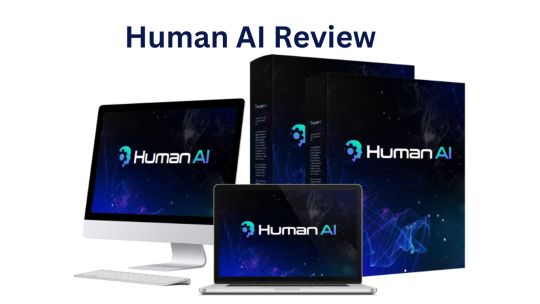
Human AI Review: The Future of Interactive AI-Powered Engagement
Human AI is a groundbreaking innovation that redefines AI-powered interaction. Whether you’re a business owner looking to automate customer engagement, a content creator aiming to build a personal brand, or an educator seeking an intelligent assistant, this AI-powered app delivers on every front.
With its hyper-realistic visuals, intelligent conversation abilities, and hands-free interaction, Human AI is leaps ahead of traditional chatbots. If you're ready to leverage the future of AI-driven communication, this is the tool to watch in 2025 and beyond!
Pricing and (OTOs)
Human AI is available for an affordable one-time payment (OTO):
Front End: ($17)
OTO 1: Unlimited ($67)
OTO 2: DoneForYou ($297)
OTO 3: Automation ($47)
OTO 4: Swift Profits ($47)
OTO 5: Limitless Traffic ($97)
OTO 6: Agency ($167)
OTO 7: Franchise Edition ($97)
OTO 8: Multiple Income ($47)
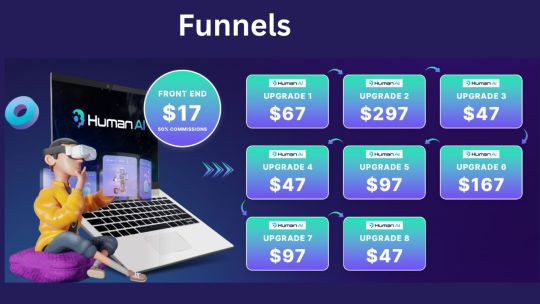
Key Features and Benefits of Human AI
1. AI Humans That Feel Real
Human AI enables users to create and stream AI humans that engage in real-time conversations with natural facial expressions, accurate lip-syncing, and fluid gestures. This level of realism creates an almost lifelike interaction, significantly improving audience engagement.
2. Multilingual AI with Flawless Accuracy
One of the standout capabilities of Human AI is its ability to speak any language like a native speaker. This makes it a powerful tool for businesses and content creators who want to reach a global audience effortlessly.
3. AI Humans Ready in 60 Seconds
Unlike traditional AI-driven solutions that require hours of configuration, Human AI allows users to activate their AI human within 60 seconds. With a library of pre-made AI human templates, getting started is quick and hassle-free.
4. Fully Trainable AI with a Custom Knowledge Base
Businesses and professionals can train their AI humans using custom knowledge bases, ensuring the AI responds intelligently and contextually to industry-specific queries. This feature is ideal for customer support, sales, and educational applications.
5. Hands-Free Interaction via Text or Voice Commands
Users can interact with their AI humans without touching a keyboard. Whether through text input or voice commands, the AI human responds intelligently, making it ideal for live streaming, customer service, and automated assistance.
6. 4K Visuals & Hyper-Realistic Lip-Sync
The AI humans are designed with high-definition 4K visuals and cutting-edge lip-sync technology, making conversations incredibly realistic. Unlike static avatars, these AI humans provide an immersive experience that engages users at a deeper level.
7. 24/7 AI-Powered Availability
Forget human limitations! Human AI operates 24/7 without breaks, ensuring your AI human is always available to answer questions, provide assistance, and interact with customers at any time of the day.
8. Seamless Website & Platform Integration
With Human AI, you can effortlessly embed AI humans on websites, stores, funnels, pages, or blogs. Businesses can use AI-powered hosts, sales assistants, or customer service agents without investing in additional infrastructure.
Who Can Benefit from Human AI?
Human AI is designed to cater to multiple industries, including:
Businesses – Automate customer interactions and support with real-time AI humans.
Content Creators & Influencers – Stream AI-powered content that attracts and engages audiences.
Educators & Trainers – Create virtual AI tutors for seamless online learning experiences.
Marketers – Boost conversions with AI-driven presentations and personalized interactions.
E-commerce Stores – Offer AI-powered sales assistants that never take a break.
Click Here For Instant Access To Human AI >>
#human ai review#human ai robot#proper.ai reviews#human ai labs#human trust in artificial intelligence review of empirical research#humata ai review#human ai test#human ai labs inc
0 notes
